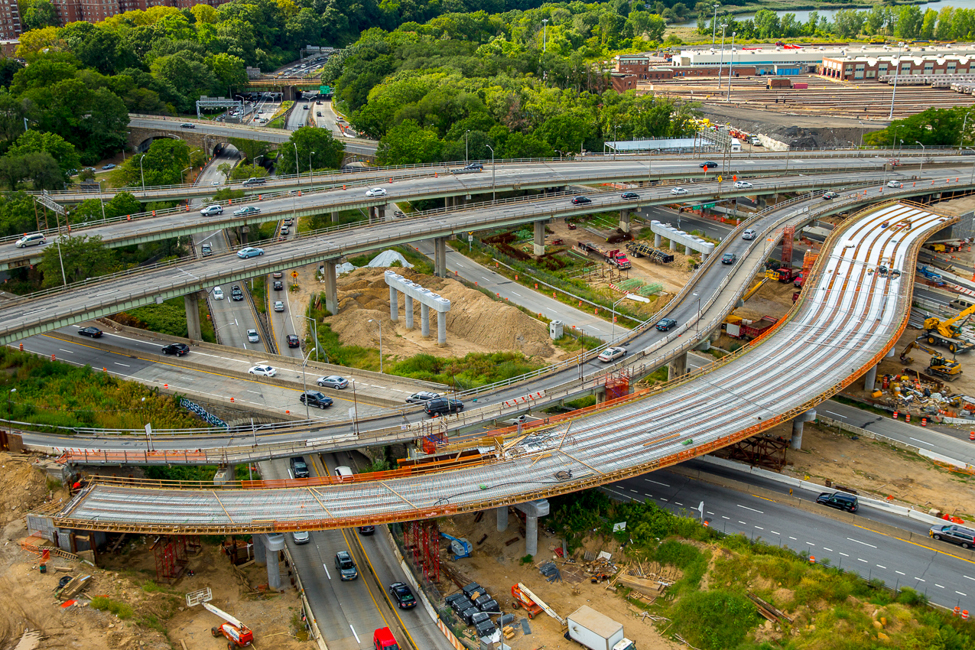Overview
LiRo-Hill provided resident engineering and construction inspection services for the highly complex reconstruction of the Van Wyck Expressway at the Kew Gardens Interchange, which carries the Expressway over the Grand Central Parkway. This intersection carries more than 600,000 vehicles daily, and is vital to vehicular traffic in Queens as it connects the Grand Central Parkway, the Van Wyck Expressway, the Jackie Robinson Parkway, and Union Turnpike.
About the Project
The initial project phases for improvements included the construction of an auxiliary lane on the north bound roadway and replacement of the main line Northbound Van Wyck Expressway over the Grand Central Parkway. In addition, the project included the construction of a single span precast concrete arch bridge spanning over a relocated 60” diameter sewer main and replacement of the Eastbound Jackie Robinson Parkway/Union Turnpike to Northbound Van Wyck Expressway Ramp (Ramp KB). The existing NYC Arterials Maintenance Building was demolished in order to provide space for the footprint of the new ramp. A new building east of the original site was constructed. This building houses both the NYC Arterial Maintenance and the NYS DOT Maintenance Groups.
LiRo-Hill worked on Phase III of the project by providing resident engineering, environmental engineering, safety, and construction inspection services for the reconstruction of 1.2 km of I-678 Van Wyck Expressway (VWE) Southbound mainline and ramps from 72nd Avenue to Hoover Avenue. The new structure has a 215 mm (8.5 in) stainless steel reinforced concrete deck sitting of massive steel girders spanning up to 86 m between supports, drainage system with scuppers, lighting, ITS and FDNY system, bridge railing supported by reinforced concrete piers and abutments on cast in place steel piles foundations. Over 850 m (2,800 ft), of three traffic lanes and shoulders of 425 mm (17 in) thick unreinforced concrete pavement was placed on each end of new viaduct.
Project Challenges & Solutions
Close proximity to adjacent properties and complex work zone traffic control created challenges during construction, forcing work to be completed in multiple stages with vehicular traffic having to be shifted at the completion of each stage. Temporary support systems of structures and roadways allowed for staged demolition and installation of the new structure. The project also included new retaining walls, (modular, reinforced concrete and temporary GRSS walls), highway lighting along main line and exit ramps, and the relocation of water mains, installation of new sewers, and communication facilities. LiRo-Hill also enhanced project coordination by using 3D models for clash detection and 4D scheduling.
Outcome
The new northbound viaduct carrying the Van Wyck Expressway over the interchange opened in November 2014, 18 months ahead of schedule. The viaduct is 800 ft long and 56 ft wide, making it the longest fully jointless curved New York State Department of Transportation structure. Phase III expand upon the improvements already accomplished and helped to ensure this roadway can fulfill the needs of present and future generations.












